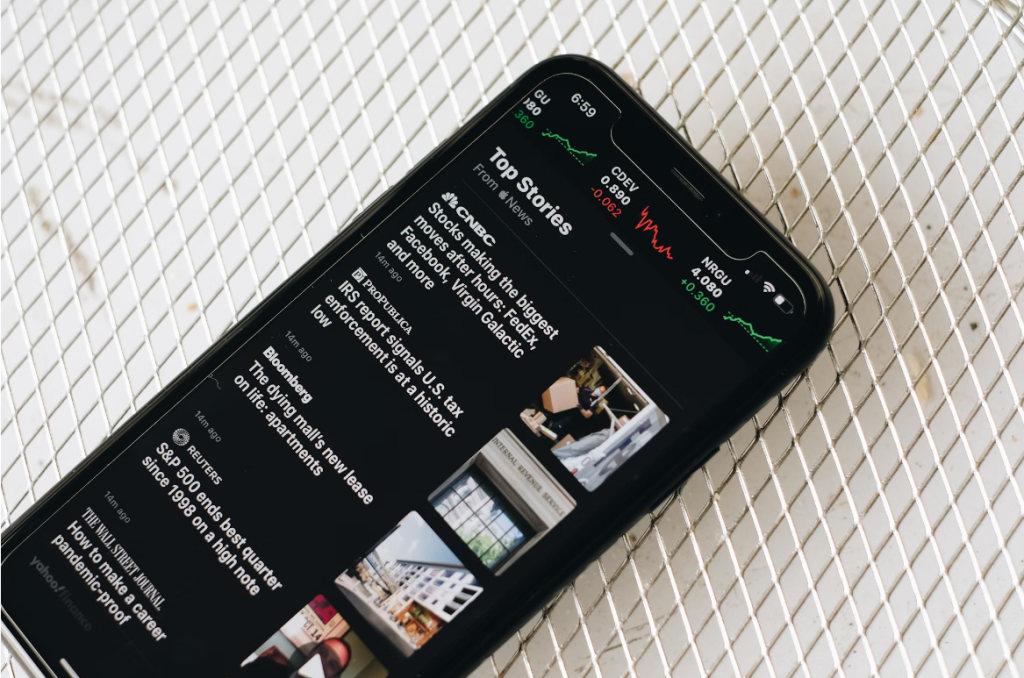How to Write a Newsletter Successfully: 9 of Byrne Hobart’s Life-Changing Keys
In a world of online content creation, writing a newsletter provides a unique advantage. As Byrne Hobart explains on the “How I Write” podcast, having a newsletter allows you to carve out a niche for yourself.
Instead of competing with everyone on the same topics, you can dive deep into a specific area of interest.
Hobart’s approach to newsletter writing has helped him become a well-known voice in finance, business, and tech analysis.
Let’s break down the process behind his successful newsletter, “The Diff,” and learn how to write a newsletter successfully as well as explore his thoughts on writing, building ideas, effort, and how to make an impact in the content space.

Finding Your Niche in Newsletter Writing
When it comes to newsletters, Hobart believes that the key is to focus on a narrow topic and make it your own.
According to him, you want to become “the person who has worked the hardest on explaining this one thing.”
He acknowledges that it’s tough to be the first to report breaking news, but there’s always demand for the final, most definitive take on any given story.
For example, if you wake up every day at 5:00 AM to write, you’re not going to be the first person to cover breaking news.
However, you can be the one who takes the time to produce the most insightful and thoughtful analysis, which often has more lasting value.
Key takeaway:
- Niche focus is crucial to differentiate your newsletter from competitors.

Building and Tracking Ideas
Hobart’s approach to building ideas is refreshingly simple. He maintains a large file filled with a long list of ideas.
Some ideas are just a sentence long, like “look into company X, Y, Z,” while others evolve into full paragraphs.
He organizes his ideas in a way that allows for flexibility. Some develop into posts on their own, while others require more research.
For example, he might start with a topic, then accumulate quotes, notes, and points until a coherent post emerges.
Although this method can be frustrating—especially when his viewpoint changes halfway through the research process—it’s all part of the fun.
Idea organization tips:
- Maintain a large file of ideas, some as simple as a single sentence.
- Develop topics gradually, gathering quotes and notes over time.

The Role of Research in Writing
Hobart sees his Saturday links email as both an interest-driven compilation and a leading indicator of future posts.
If he’s linking to articles or books about a company or industry, chances are he’s gathering background information for a future post.
He enjoys reading long-form articles and business books and believes that the best business stories are about scandals rather than successes.
Scandals, after all, have plots full of hubris, downfalls, and consequences—almost like Greek tragedies. In contrast, stories of success tend to be less captivating: “This company was scrappy, now it’s big, and the shareholders are happy.”
Hobart points out that failed companies provide richer content because their employees are no longer busy making money—they’re eager to explain why things went wrong.
This gives the writer a wealth of information and perspectives to draw from.
Takeaways:
- Scandals make for more compelling stories than successes.
- Failed companies provide richer and more revealing content.

Understanding Media Bias and Motivation
One of Hobart’s core philosophies is that when you read an article, you should always ask: “Why did this get written?” When a deeply reported story appears, it’s essential to understand who talked to the writer and why.
An example he gives – if you’re reading a book or an article about a business scandal, there’s a good chance the story comes from people who are no longer working there and want to clear their names.
Similarly, Hobart urges readers to recognize when a particular narrative is being pushed. If two people were in a room during a key meeting and only one comes out looking good in the retelling, chances are that person was the source of the story.
This doesn’t mean they’re lying, but it does mean that their version is self-serving. Understanding these dynamics can give you a deeper level of insight than what’s on the surface.
Checklist:
- Always question the motive behind why a story is being told.
- Understand who benefits from the narrative and look deeper.
The Correlation Between Effort and Success
A common question for newsletter writers is: how much does effort correlate with success?
Hobart admits that, unfortunately, the pieces he works the hardest on often don’t perform as well as he’d hoped.
However, there seems to be a slight correlation between the length of a piece and its success.
According to Hobart, “The more you write about something, the more likely it is that you’ve actually done the definitive take, and that’s what people cite.”
In today’s content world, where it’s difficult to be the first to cover a story, the focus should be on writing the last important piece—the one that explains the topic thoroughly and comprehensively.
Effort success factors:
- Longer, well-researched pieces often correlate with success.
- Focus on being the last, definitive take on a topic.

Surprising Success and the “Huh” Reaction
Sometimes, posts take off unexpectedly. Hobart recalls the success of his piece on the economics of gas stations. It wasn’t a topic he expected to resonate so strongly, but it generated a lot of interest.
This led him to an important realization: it’s hard to predict what people don’t know but will find interesting.
In the case of gas stations, people were curious about how they make money.
Most don’t realize that the profits come not from gas sales, but from selling lotto tickets, cigarettes, snacks, and other convenience items.
This business model revolves around foot traffic, with gas as a loss leader to bring customers in.
Key insight:
- Unexpected topics can sometimes generate the most interest.
- Gas stations make their profits from convenience items, not gas sales.
The Newsletter Evolution and the Power of Community
Hobart’s newsletter has evolved since its inception. What started as a fun side project grew into something much bigger when COVID hit.
Hobart realized early in the pandemic that job interviews and human contact would be limited, so he made “The Diff” a paid newsletter, which turned out to be a great move as 2020 became a boom year for online content.
Over time, Hobart also noticed that many of his readers were smart, thoughtful people—some of whom were startup founders.
This created opportunities to connect readers with similar interests and skill sets.
As the newsletter grew, so did the potential for these connections, which is one reason why he started the Diff Jobs section.
Just like a gas station makes money by selling non-gas products, Hobart saw that his newsletter could bring in readers for ideas and then help them find jobs.
The more the network grows, the more valuable it becomes.
Unlike a newsletter’s audience, where the value increases linearly with growth, a network’s value grows exponentially as more connections are made between people.
Growth insights:
- Building a community within the newsletter creates added value.
- Networking opportunities arise as reader connections increase.

Managing Growth and Reader Quality
As “The Diff” grows, Hobart remains mindful of maintaining a high-quality readership. He doesn’t want to dilute the newsletter with noise or readers who aren’t aligned with its content.
But since he’s writing a newsletter he would personally want to read, he naturally attracts people who share his curiosity for in-depth analysis of tech and business topics.
Ultimately, Hobart doesn’t worry too much about whether he’s attracting the “right” readers.
He believes that as long as the content remains high-quality and thought-provoking, the right audience will follow.
Key point:
- Quality content naturally attracts a high-quality audience.
The Role of Schedule and Routine in Writing
In the early days of “The Diff,” Hobart juggled a full-time job and his writing. He would wake up at 5:00 AM to work on the newsletter before starting his day job.
While his schedule has shifted over time, he still maintains a rigorous routine, often getting up at 5:00 AM to check email, catch up on the news, and write.
One strategy Hobart used during his full-time job was taking a half-hour lunch break to write without distractions.
By limiting his time and avoiding the internet, he could write a substantial portion of his newsletter in a short period.
Now, writing is his primary focus, so he spreads it throughout the day, making sure to sleep on a piece before editing it to ensure clarity and accuracy.
Routine tips:
- Consistency in writing schedules helps produce better content.
- Take short, focused blocks of time for uninterrupted writing.

Retention and the Importance of Writing to Remember
For Hobart, writing isn’t just about sharing ideas—it’s a tool for retention.
He admits that, like many avid readers, he often forgets much of what he’s read.
Writing about a topic helps him remember and connect new ideas to previous ones.
Hobart’s version of spaced repetition involves thinking about what he’s reading in the context of everything else he’s read.
This process of drawing parallels and identifying contrasts improves both retention and comprehension.
In today’s information age, many argue that memorization isn’t necessary since everything is just a Google search away.
But Hobart believes that having knowledge at your fingertips allows you to connect ideas faster and be more intellectually agile.
Key takeaway:
- Writing enhances retention and helps connect new ideas to existing knowledge.
Final Thoughts on How to Write a Newsletter
Byrne Hobart’s approach to writing and running a successful newsletter offers valuable insights for anyone looking to create content that resonates with readers.
From focusing on niche topics to building a network of engaged readers, Hobart shows that success in writing is a combination of hard work, curiosity, and strategic thinking.
Whether you’re writing about the economics of gas stations or analyzing the latest tech trends, Hobart’s advice remains the same: dig deep, make connections, and always aim to provide value with your insights.
(Source : “How I Write” Podcast by David Perell featuring Byrne Hobart)




